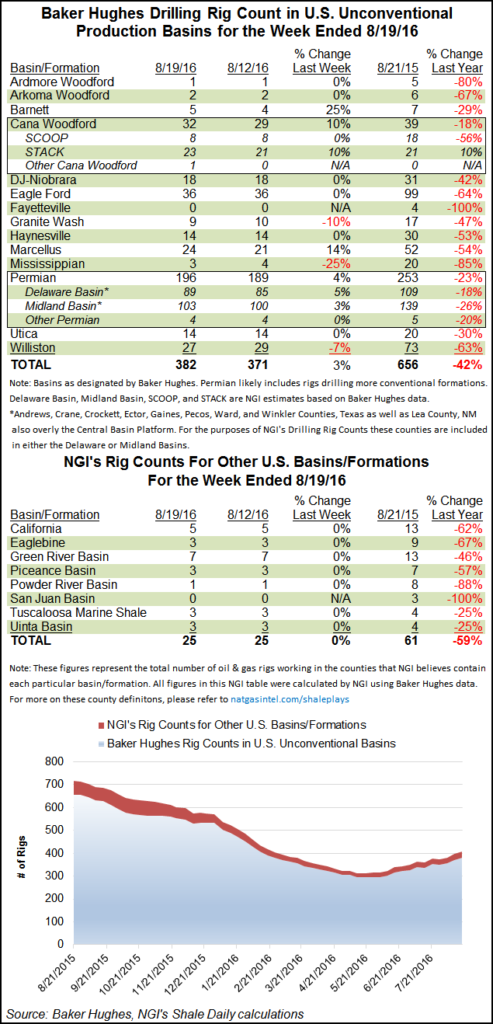Shale Daily | E&P | NGI All News Access
Drillers In A Delaware State of Mind
In the latest survey of drilling activity tallied by Baker Hughes Inc. (BHI) and NGI, the Permian Basin’s Delaware sub-basin added four more rigs to end the week at 89 active. That likely doesn’t surprise those who attended the recent Enercom industry conference.

Wunderlich Securities Inc. analysts were among the Enercom attendees. In a note published Friday they acknowledge the industry enthusiasm for the Delaware Basin.
“The Delaware Basin is hot and getting hotter,” Wunderlich analysts said. “Obviously, the Permian has been a focal point of activity and investment for quite a few years now, with the Midland side being a big focus, but in the last few months, the Delaware has really come into its own with strong wells, good valuations, and plenty of company-making potential in the region.” Wunderlich noted, in particular, the success of Resolute Energy in the Delaware Basin (see Shale Daily, July 8).
Where the drill bits go, the midstream will follow as evidenced by development activity in the Delaware (see Shale Daily, May 5).
NGIrecently began picking apart BHI’s Permian Basin data to estimate activity in the Delaware and the Midland basins separately. At week’s end, the Midland Basin had gained three rigs to end at 103 active. NGI estimated four rigs active in the remainder of the Permian to bring the Permian Basin total to 196 rigs for the week. That’s up from 189 rigs active in the previous week and continues the trend of producers flocking to where the easy/easier oil is.
Overall in the United States for the week, land-based rigs gained nine units to end at 470 active. One offshore rig was added, too, which brought that total to 18 active. All of the U.S. rigs that came back were oil-focused, bringing that total to 406. Natural gas rigs held steady at 83 units active. Seven horizontal rigs came back, accompanied by one directional and two verticals. Texas led the states with eight rigs added, and the Permian led plays, having added seven rigs.
In Canada, four natural gas rigs left play, accompanied by one “miscellaneous” rig, dropping the country’s total by five units to end at 121 rigs active. That left North America with a net gain of five units to end at 612.
© 2024 Natural Gas Intelligence. All rights reserved.
ISSN © 2577-9877 | ISSN © 2158-8023 |
